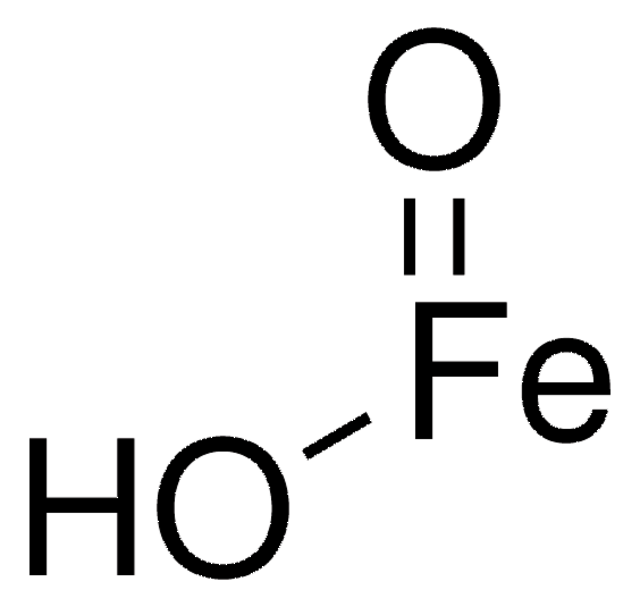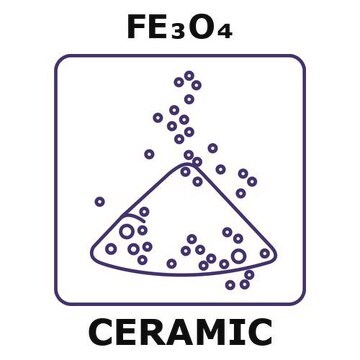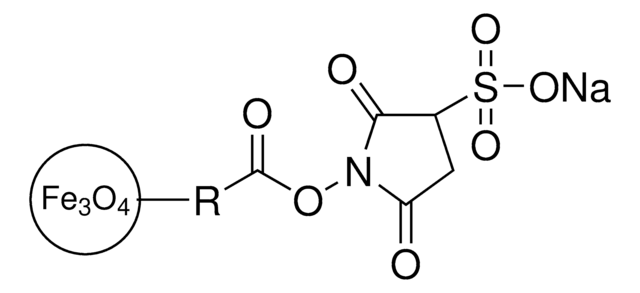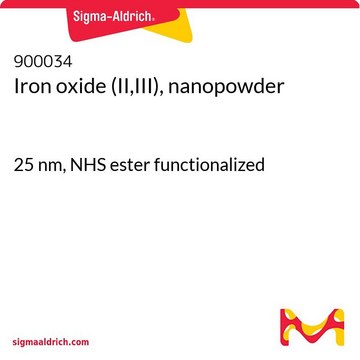637106
Iron(II,III) oxide
nanopowder, 50-100 nm particle size (SEM), 97% trace metals basis
Sinonimo/i:
Ferrosoferric oxide, Iron oxide black, Magnetite
About This Item
Prodotti consigliati
Livello qualitativo
Saggio
97% trace metals basis
Stato
nanopowder
spherical
Area superficiale
6-8 m2/g , estimated
Dimensione particelle
50-100 nm (SEM)
Punto di fusione
1538 °C (lit.)
Densità
4.8-5.1 g/mL at 25 °C (lit.)
Densità bulk
0.84 g/mL
applicazioni
battery manufacturing
Stringa SMILE
O=[Fe].O=[Fe]O[Fe]=O
InChI
1S/3Fe.4O
SZVJSHCCFOBDDC-UHFFFAOYSA-N
Cerchi prodotti simili? Visita Guida al confronto tra prodotti
Categorie correlate
Descrizione generale
Applicazioni
Risultati analitici
Codice della classe di stoccaggio
11 - Combustible Solids
Classe di pericolosità dell'acqua (WGK)
nwg
Punto d’infiammabilità (°F)
Not applicable
Punto d’infiammabilità (°C)
Not applicable
Dispositivi di protezione individuale
dust mask type N95 (US), Eyeshields, Gloves
Scegli una delle versioni più recenti:
Possiedi già questo prodotto?
I documenti relativi ai prodotti acquistati recentemente sono disponibili nell’Archivio dei documenti.
I clienti hanno visto anche
Articoli
Professor Randal Lee (University of Houston, USA) discusses design considerations for iron oxide magnetic nanospheres and nanocubes used for biosensing, including synthetic procedures, size, and shape. The effects of these variables are discussed for various volumetric-based and surface-based detection schemes.
An article concerning self-propagating reactions induced by mechanical alloying, presented by Sigma-Aldrich.com.
Currently, magnetic nanoparticles (MNPs) are attracting a lot of attention because of the possibility of many novel applications, especially in biomedical research.
Global Trade Item Number
| SKU | GTIN |
|---|---|
| 637106-250G | 4061832723600 |
| 637106-100G | 4061832723594 |
| 637106-25G | 4061832723679 |
Il team dei nostri ricercatori vanta grande esperienza in tutte le aree della ricerca quali Life Science, scienza dei materiali, sintesi chimica, cromatografia, discipline analitiche, ecc..
Contatta l'Assistenza Tecnica.





